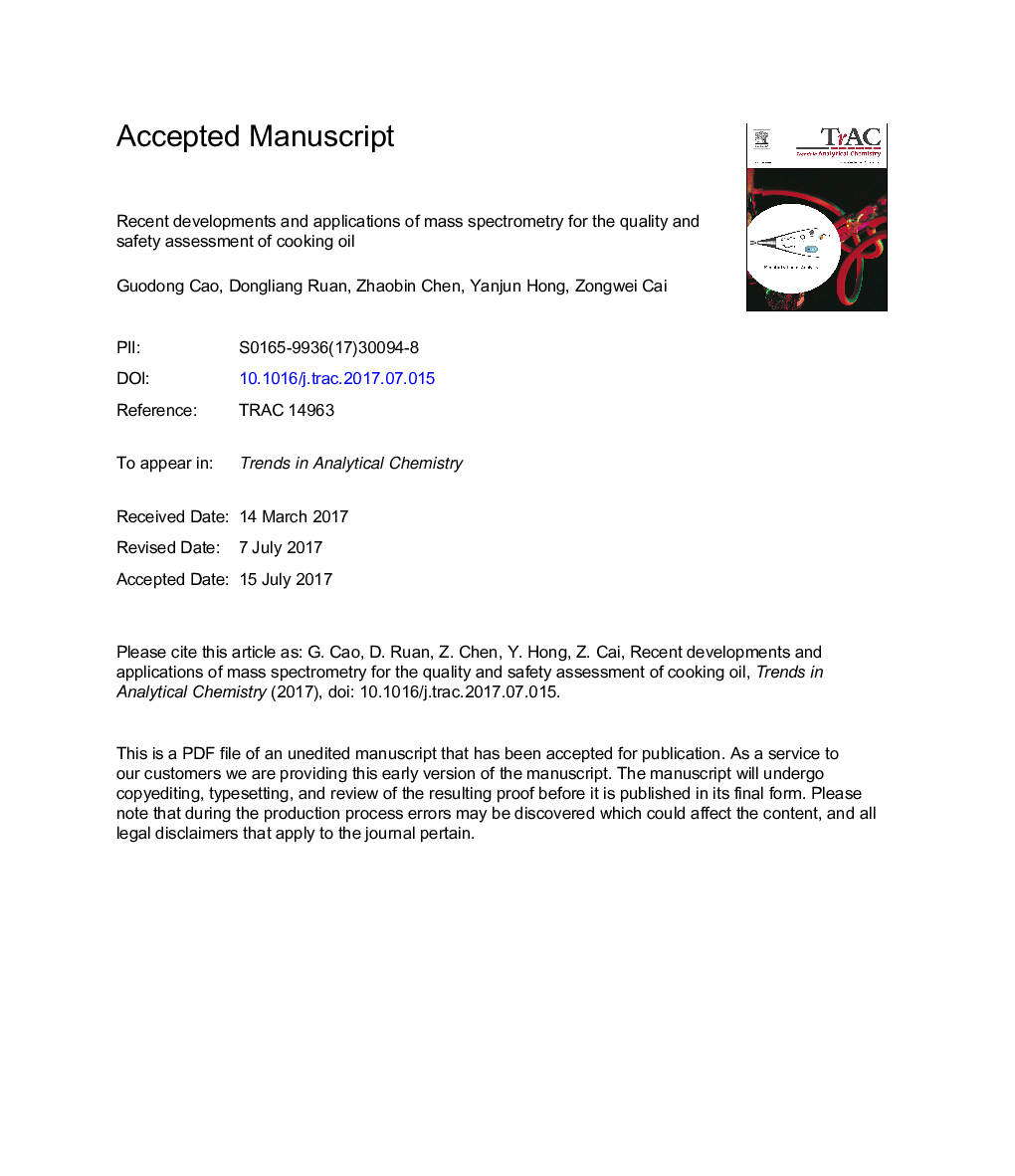| Article ID | Journal | Published Year | Pages | File Type |
|---|---|---|---|---|
| 7688174 | TrAC Trends in Analytical Chemistry | 2017 | 48 Pages |
Abstract
Cooking oil, composed of great variety of chemical constitutes, has been increasingly prevailing in public diet due to its functional and nutritional benefits to consumers. The long-term storage, deep frying process and repeated use of cooking oil will release numerous deterioration products, such as aldehydes, ketones, epoxides, polymerides and cyclic aromatic hydrogen compounds, which influences the quality of cooking oil and has emerged safety concerns on used cooking oil. Analyzing these components with complex molecular structures and dynamic concentration ranges in oil samples poses a big challenge to researchers. In this article, we review the recent developments of mass spectrometry as a powerful tool for quality assessment of cooking oil and highlight its increasing applications in authentication, aging and marker-detection of used cooking oil. Additionally, the current technical challenges and future prospects associated with these methodologies are provided.
Keywords
FT-ICRDArTESISRMFLDTOFQuadrupoleUPLCMRMAPPIEASIAPCIMS/MSAtmospheric pressure photoionizationPTrflame ionization detectorDirect analysis in real timeIon trapmatrix-assisted laser desorption/ionizationFIDFourier transform ion cyclotron resonanceCooking oilUsed cooking oilTime-of-Flight SIMMass spectrometryTandem mass spectrometryfluorescence detectorMALDIDegradation productsselected-ion monitoringselected-reaction monitoringMultiple-reaction monitoringultra performance liquid chromatographyhigh performance liquid chromatographyHPLCGas chromatographyelectrospray ionizationelectron ionizationchemical ionizationatmospheric pressure chemical ionization
Related Topics
Physical Sciences and Engineering
Chemistry
Analytical Chemistry
Authors
Guodong Cao, Dongliang Ruan, Zhaobin Chen, Yanjun Hong, Zongwei Cai,
